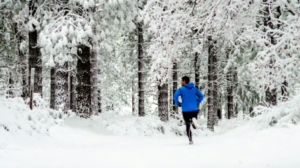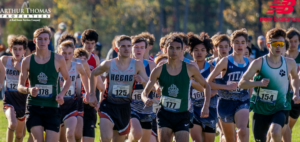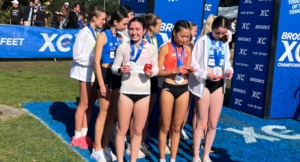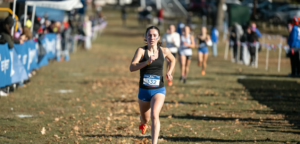I’ve written a couple of articles on summer running, the backbone of any truly strong running program. Many consider cross country to be a summer sport that plays out in the fall and I’d find it hard to argue with. However I’ve never been big on prescribing what my kids do in the summer. Early on I learned no matter what I did to encourage summer running, it was up to the athlete to buy in on the importance. The best I can do is provide guidance to those who want it and provide opportunities for them to participate. Early years had me looking to hold weekly summer fun runs and summer camps for my athletes. But I got tired of coming to town only to have one or no kids join me for a run. So accidentally I did something different.

Over the years as athletes joined the team, I got to know their parents. Now I often find one of two things, which are kind of the same thing anyway in that often the athlete runs because the parent runs, or the parent begins running because of their child. Either way, in some cases, the parent and the athlete both run. So we started opening everything up to the entire running community and by golly things kind of took off.
We started with Monday Night Grind, a weekly summer ritual that opened up the opportunity for anyone to run our infamous Grinder workout. And much like we did with the kids, we provided an incentive for “fast times” by offering a Tshirt to anyone who can beat the Grinder. While the time remains 8 minutes for males and 10 minutes for females, it is age graded, giving contestants another minute for every ten years of life, starting after 40. We’ve given out the same number of Monday Night Grind shirts as we have high school Grinder shirts.
Then we added our Thursday “Viking Runs”, a weekly jaunt on our community fundraising 5K course which is run mostly on our home cross country course with just a different start and finishing point. Extremely low key, we rely on participants either knowing the course, or following someone who does, we have no entry fee, no tshirts and no stress. Many of our kids will jog the course with friends or family.
And of course we do our “fun” events during the summer too. Over the years I’ve stumbled across ideas other race promoters have put forth, and either replicated what they do or changed it to meet our needs. Last year’s lineup was our Itty Bitty Backyard Ultra. Much like the other “Backyard” ultras, we have our people heading out on an almost 2 mile loop every half hour (other backyard’s are 4.017miles every hour.) Seems pretty easy until you’re 6 hours in, about to go out for your 23rd mile and need to be back in 30 minutes to begin your 25th mile.

We also hosted our Full Moon Fever race, a five mile race run during, you guessed it, a full moon. The idea is you can start anytime after 8:45pm and the winner is the first person across the line after 10pm. While this might sound easy, contestants are not allowed to run with a watch, having to estimate how long the run will take, work backwards from there, then determine what time they must start to get there as close but not too early. Racers are required to wear a headlamp and bright or reflective clothes but no way to record time or distance.

This year we’re back to Barkley’s Baby, our knock off of the Barkley’s marathons, where contestants run through the woods looking for checkpoints, over five crushing loops of 20 miles. Ours is the half version, five 10 mile laps in the woods. We have thirteen checkpoints, books hidden in the woods where the contestants need to rip out the page associated with their registration number. They have six hours to complete a lap, before they need to have checked out, with a new number and the challenge of going in the opposite direction.
This year was the biggest group yet, with twenty-two starters, and 20 people finishing one lap. While about even between us older people and the youth, many of the youth participants (and all of the completers) are alumni, some as recent as a few weeks ago. The four people who finished averaged 57 miles in the five laps, with our last finisher completing their five laps in just under 27 hours.

Our new addition this year is the Grinder Mountain Challenge, where we will be using the uphill mile of the Grinder and all of its 300 meters of elevation, to have challenges of our local mountains. Run four laps and you have Pack Monadnock. Run three more and you can snag Mount Monadnock. Do fifteen, you’ve got the summit of Mount Washington. And finally we have the Full Moon Fever this year as well. All of these are low key events, no real focus on time or distance, and truth be told, not really much emphasis on effort or focus.
I’ve always believed that that summer was simply for running, not training. Or at least, not specific training. I always left that for the season. Never being able to afford my kids being burned out or injured, we’ve always simply focused on getting the running in. And I’ve found the best way to do that is simply offer the opportunity and stress that running is so much a sport as it is a lifestyle. Go out, spend a few hours (or more than a few!) learning to do something you might not realize you enjoy with like minded people, add to your fitness base, taking some small steps towards your preparedness for the upcoming season. I think what kids and some coaches forget, this sport is made of many small steps over a long space of time or distance, not just some big ones. Find a way to get out there and enjoy it and that’s the best training during the summer.
And it pays the biggest dividends. See you out there.











